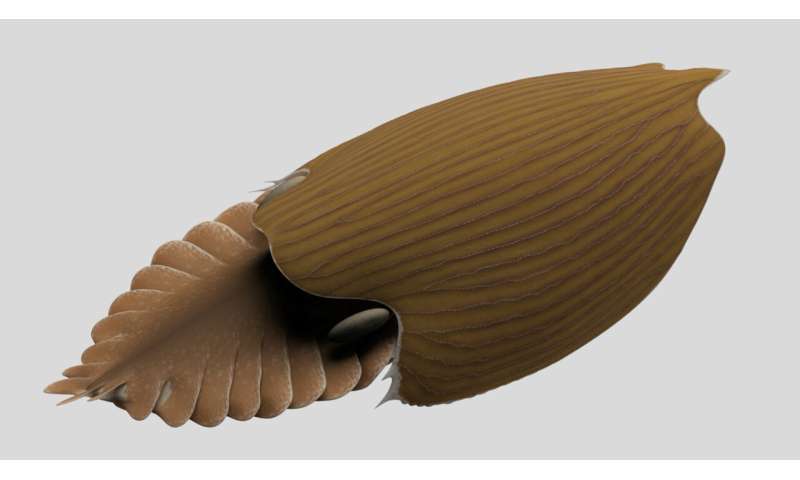Best of Last Week – Colorized Tasmanian tiger, shape-shifting animals, medications accumulating in the gut

It was a good week for scientists studying extinct creatures, as a team at Composite Films offered a new look at the extinct Tasmanian tiger by colorizing old film footage of the wolf-like thylacine, which was last seen over 85 years ago. Also, a team of paleontologists at the Royal Ontario Museum announced that they had discovered the remains of a huge new fossil species—it was named Titanokorys gainesi, and is believed to have lived in the sea approximately a half-billion years ago. And a prehistoric winged lizard was unearthed in Chile—the pterosaur was the first of its kind ever found in the southern hemisphere.
In technology news, a team with members from The State University of New York at Albany, the State University of New York at Buffalo and Keya Medical found a way to spot computer generated faces by examining the subject's pupils. Also, a team of researchers at Hong Kong University of Science and Technology, realized gallium-nitride-based complementary logic integrated circuits, opening the door to ICs with wider bandgaps. And security researcher Mark Green announced that he had updated his hacked lightning cables, called OMG cables, to allow them to record user keystrokes. Also, a team at Monash Energy Institute found that a spoonful of sugar could open a path to longer-lasting lithium sulfur batteries, adding a glucose-based material to the positive electrode stabilized the sulfur.
In other news, an international collaboration led to the development of a single-shot, room-temperature stable COVID-19 vaccine that thus far has conferred lasting immunity against the disease. And bird researcher Sara Ryding with Deakin University in Australia found that the warming climate is pushing animals to "shapeshift", inducing development of longer legs and bigger beaks and ears.
And finally, if you take common medicines regularly, you may want to look at the work done by a team from the European Molecular Biology Laboratory in Germany and the Medical Research Council in the U.K. They found that some common medications can accumulate in gut bacteria, resulting in reduced drug effectiveness and altering the gut microbiome.
© 2021 Science X Network